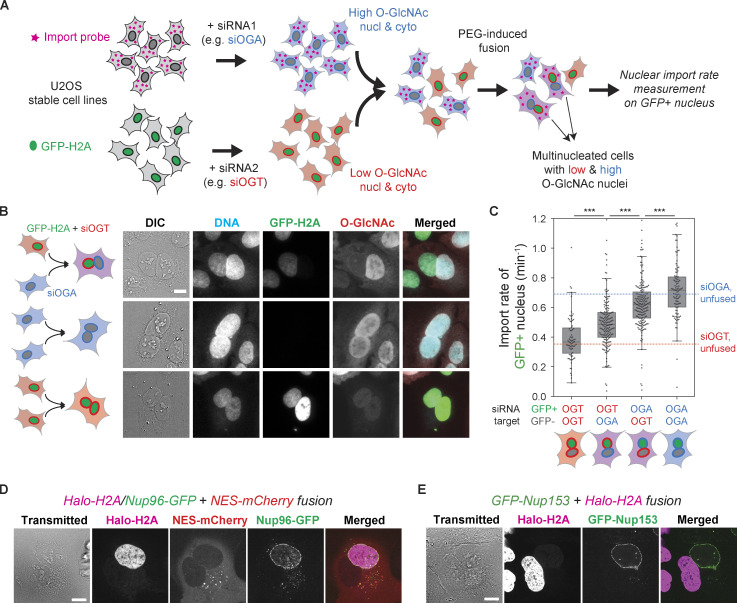Figure 3.
Nucleus-confined factors are responsible for the O-GlcNAc dependence of nuclear transport kinetics. (A) Schematics of heterokaryon analysis. Two U2OS stable cell lines, one expressing the NES-mCherry-LINuS import probe and the other expressing GFP-H2A, were separately transfected with OGA- or OGT-targeting siRNA, cocultured, and then fused by brief treatment with PEG. The nuclear import rate was measured on the GFP-positive nuclei in the mCherry-positive fused cells. Cyto., cytoplasm; Nucl., nucleus. (B) RL2 immunofluorescence images of the fused cells, showing that the nuclei largely retain the prefusion O-GlcNAc level. (C) Nuclear import rate of the GFP+ nucleus in four different fusions (from left to right): GFP-H2AsiOGT + import probesiOGT, GFP-H2AsiOGT + import probesiOGA, GFP-H2AsiOGA + import probesiOGT, and GFP-H2AsiOGA + import probesiOGA. Blue and red dotted lines indicate the median nuclear import rates of the unfused cells transfected with siOGA and siOGT, respectively (values from Fig. 2 A). n ≥ 75 nuclei for each condition. P values calculated by two-sided Welch’s t test where ***, P < 1 × 10−4. (D) The fusion of a U2OS cell stably expressing Halo-H2A (magenta) and Nup96-GFP (green) and another U2OS cell expressing NES-mCherry (red). (E) The fusion of U2OS cell stably expressing GFP-Nup153 (green) and another U2OS cell expressing Halo-H2A (magenta). Scale bars, 10 µm.

